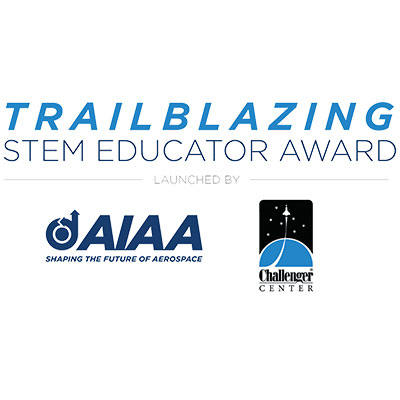The aeronautics industry is building on the advances made since the early 20th century taking us further, faster, safer, and cleaner. In the next 5–10 years, many new capabilities will be introduced, and the next generation will experience flight in ways we are just imagining. AIAA advances these opportunities for novel aircraft design, operations, and impact through its focus on the Aeronautics Domain.
Key Topics
 Advanced Air Mobility
Advanced Air MobilityAdvanced air mobility could grow into a $115 billion industry that gives all of us new transportation options. With clear operational guidelines, regulations, and standards for accommodating and incorporating autonomy, we see a thriving integrated urban and regional airspace in the next decade. The benefits of autonomy will enhance safety for everyone and enable capabilities we are only just imagining.
Learn More
 Carbon Emissions and Sustainability
Carbon Emissions and SustainabilityThe global community is focused on achieving net-zero greenhouse gas emissions from the aviation sector by 2050. The AIAA community plays an integral role in this effort that will make a substantial difference to benefit our planet.
 Certification
CertificationThe widespread use of UAVs and drones—both commercial and recreational—prompted the Federal Aviation Administration (FAA) to adapt its certification processes. Similarly, the FAA must facilitate safe use of AAM systems for passenger and cargo transport. As the FAA refreshes its certification strategy, we expect to see clear specifications, regulations, and standards emerge that will strike an appropriate balance between safety and innovation.
Space launches are close to a daily occurrence and launch sites are infringing on urban environments and large metropolitan areas. The integration of commercial air traffic, AAM, and space launch traffic must receive government attention to help drive global regulatory and certification strategies that ensure safety and continued smooth sustainable economic growth for all stakeholders.
 High-Speed Flight
High-Speed FlightHigh-speed “transportation” – both military and civilian – is fast becoming a reality. Integrating hypersonic and supersonic flight into the national and global airspace will require attention to operational efficiency, safety through certification, and environmental and societal impacts including noise and emissions. AIAA will address questions around:
- Is sustainable civil high-speed endo-atmospheric flight achievable?
- What role does the government have in promoting hypersonic and/or supersonic flight?
- What technologies are needed to develop and mature efficient and low environmental impact hypersonic and supersonic flight?
AIAA Related Content
EVENTS
This webinar is hosted by AIAA, is presented by Lumafield, and is open to the public.
 Industrial computed tomography (CT) scanning offers a non-destructive and highly detailed method of inspecting aerospace, defense, and avionics. It utilizes x-rays and advanced reconstruction techniques to provide intricate 3D visualizations of internal structures. By using CT scanning, manufacturers can meticulously examine composite materials, wiring, seals, connectors, and valves to pinpoint the causes of failures—whether it’s material defects, inconsistencies in manufacturing, or wear-induced damage. Armed with this knowledge, aerospace manufactures can take proactive steps to resolve these issues, ensuring product reliability, patient safety, and preventing expensive recalls.
Industrial computed tomography (CT) scanning offers a non-destructive and highly detailed method of inspecting aerospace, defense, and avionics. It utilizes x-rays and advanced reconstruction techniques to provide intricate 3D visualizations of internal structures. By using CT scanning, manufacturers can meticulously examine composite materials, wiring, seals, connectors, and valves to pinpoint the causes of failures—whether it’s material defects, inconsistencies in manufacturing, or wear-induced damage. Armed with this knowledge, aerospace manufactures can take proactive steps to resolve these issues, ensuring product reliability, patient safety, and preventing expensive recalls.
During this webinar, representatives from Lumafield will discuss the application of CT scanning for inspecting aerospace, defense, and avionics at all stages of the development process, from initial R&D through high-volume production with automated end-to-end workflows.
What We’ll Discuss:
- How industrial CT scanners work.
- How to quickly spot issues that can cause catastrophic failures.
- How to measure minute features without cutting your parts open.
- How to incorporate high-volume industrial CT scanning in a manufacturing line.
- How to use AI software tools to make rapid go/no-go decisions in real time, without human labor.
- How companies can inexpensively adopt industrial CT scanning in both product development and manufacturing workflows.
Speakers
 Kevin Cedrone
Kevin Cedrone
Co-Founder, Lumafield
 Dave Rankine
Dave Rankine
Enterprise Account Executive, Lumafield
This webinar is free of charge and is open to the public. Registered attendees will receive a post-event email to access the on-demand recording.

Presented By
COURSES
-
Advanced Hydrogen Aerospace Technologies and Design – Online Short Course (Starts 8 October 2024)
8 October - 7 November 2024
This new joint course from AIAA and HYSKY Society, the latest and greatest in hydrogen aerospace technology is presented in the context of Fixed-Wing and eVTOL aircraft/vehicle design.
Open for registration. Register Now
-
Guidelines for the Development of Civil Aircraft & Systems
-
Composite Structures: Process Analysis, Progressive Damage, Failure Analysis, and Advanced Software
-
A Practical Approach to Gas Turbine Engine Performance & Design using GasTurb14
-
The Anatomy of Autonomy
-
Test Foundations for Flight Test – Online Short Course (Starts 18 Feb 2025)
18 February - 13 March 2025
This course introduces the components involved with planning, executing, analyzing, and reporting on a flight test program.
Open for registration. Register Now
-
Design Evolution of Aircraft Structures
-
Guidance and Control of Hypersonic Vehicles
NEWS
-
 AIAA Statement on Successful Launch of Europa Clipper
AIAA Statement on Successful Launch of Europa Clipper
14 October 2024
AIAA CEO Clay Mowry made the following statement: “On behalf of the 30,000 members of AIAA, we congratulate NASA, Jet Propulsion Laboratory, and the entire Europa Clipper team on today’s successful SpaceX Falcon Heavy launch to send the spacecraft toward Jupiter’s moon Europa. -
 AIAA Statement on Fifth SpaceX Starship Test Flight
AIAA Statement on Fifth SpaceX Starship Test Flight
14 October 2024
AIAA issued the following statement from AIAA CEO Clay Mowry: “Congratulations to the SpaceX team on its fifth test flight of Starship. From its launch at Starbase, Texas, to catching the booster, through the on-orbit views... -
 AIAA Announces Winners of Prestigious Zarem Graduate Student Awards for Distinguished Achievement in Aeronautics and Astronautics
AIAA Announces Winners of Prestigious Zarem Graduate Student Awards for Distinguished Achievement in Aeronautics and Astronautics
7 October 2024
The American Institute of Aeronautics and Astronautics (AIAA) is pleased to announce the winners of the 2024 Zarem Graduate Student Award for Distinguished Achievement. -
 AIAA Announces New $10,000 Mary W. Jackson Scholarship
AIAA Announces New $10,000 Mary W. Jackson Scholarship
2 October 2024
AIAA Foundation has launched a $10,000 undergraduate scholarship honoring the late NASA mathematician and aerospace engineer, Mary W. Jackson. The scholarship was created to provide even greater access to opportunity for the best students studying in the aerospace sciences... -
 Challenger Center and AIAA Open Nominations for 2025 Trailblazing STEM Educator Award
Challenger Center and AIAA Open Nominations for 2025 Trailblazing STEM Educator Award
24 September 2024
Challenger Center and the American Institute of Aeronautics and Astronautics (AIAA) announced they are accepting nominations for the 2025 Trailblazing Science, Technology, Engineering, and Math (STEM) Educator Award. The annual award celebrates K-12... -
 AIAA Announces its Class of 2025 Associate Fellows
AIAA Announces its Class of 2025 Associate Fellows
23 September 2024
AIAA is pleased to announce its newly elected Class of 2025 Associate Fellows. AIAA will formally honor and induct the class at the AIAA Associate Fellows Induction Ceremony and Dinner, Wednesday, 8 January 2025, at the Hyatt Regency Orlando... -
 AIAA and HYSKY Society Announce New Advanced Hydrogen Aviation Short Course
AIAA and HYSKY Society Announce New Advanced Hydrogen Aviation Short Course
19 September 2024
AIAA is pleased to announce a new continuing education course on hydrogen aviation developed in collaboration with HYSKY Society, an association committed to decarbonizing aviation with hydrogen. -
 AIAA Statement on SpaceX Polaris Dawn Mission
AIAA Statement on SpaceX Polaris Dawn Mission
13 September 2024
AIAA CEO Dan Dumbacher made the following statement: “On behalf of the 30,000 professional and student members of AIAA, we congratulate the SpaceX team and the Polaris Dawn crew on their accomplishments.




